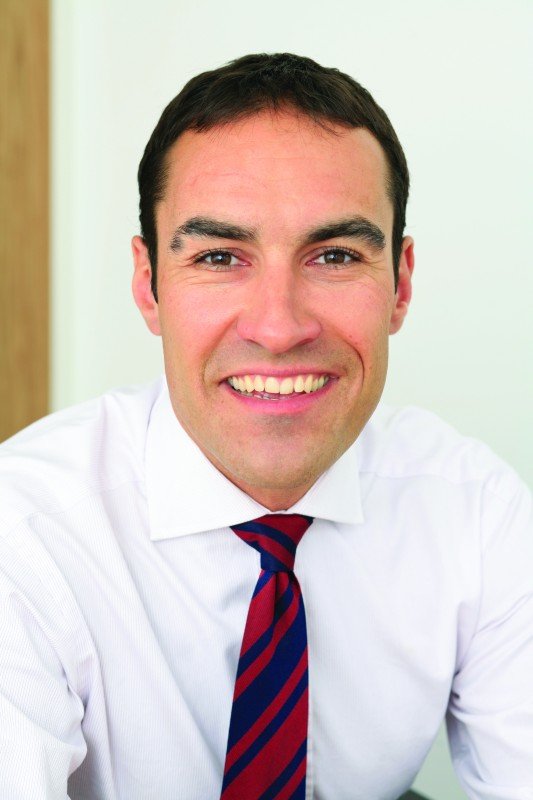The new CDM regulations are due to come into force in April. Simon Toseland, Dan Jourdan and Paul Bussey look at how they will impact on the roles of clients, designers and CDM coordinators.
Although the construction industry accounts for only about five per cent of employment in Britain, the sector is responsible for 25 per cent of fatal injuries to employees and ten per cent of reported major injuries. In addition, 56 per cent of all male occupational cancer registrations are construction-related.
While the overall number of fatalities in construction has dropped since the introduction of the Construction (Design and Management) Regulations 2007, HSE research into its effectiveness identified issues around coordination and competence, and also highlighted concerns around alignment with the EU’s Temporary and Mobiles Construction Sites Directive (TMCSD).
On the back of this review, earlier this year, HSE announced important changes to the CDM regulations in the following areas:
- significant structural simplification of the regulations;
- a lighter approved code of practice, supported with guidance targeted at each duty-holder;
- replacement of the CDM-coordinator (CDM-c) with a new role, that of ‘principal designer’;
- removal of explicit competence requirements and replacing it with the need for specific skills and supervision;
- addressing areas of the TMCSD relating to domestic clients; and
- the threshold of notification of projects to HSE.
The overall aim of these changes is to improve the overall health, safety and welfare of those working in construction. How this will be practically implemented will of course be crucial in achieving this goal.
 Dan Jourdan: client perspective
Dan Jourdan: client perspective
As the client for a wide variety of refurbishment projects on commercial properties across the UK, it has been our duty to ensure that for any CDM notifiable project, a CDM coordinator has been appointed prior to works commencing on-site. This is of course in addition to the requirement to ensure that a principal contractor has been appointed, a construction phase plan is in place and that there are adequate welfare facilities on site.
The proposed replacement of the CDM coordinator role with that of a principal designer will undoubtedly have an impact on the way we do business. The majority of our works are minor works or design and build contracts; we don’t have a separate design team.
We will still therefore need someone to fulfil that new role in lieu of the CDM coordinator role. I have always questioned the suitability of a designer or principal contractor also fulfilling the CDM coordinator role; in my mind that represents a conflict of interests. To use the Latin phrase: “quis custodiet ipsos custodes?” (who will guard the guards?).
I believe the same should be the case with the new principal designer role; in order to ensure complete health and safety compliance at all stages of a project, there has to be a level of independence from the plans and activities of contractors. Recent cuts to HSE budgets, allied to the sudden spike in construction deaths in London, give real cause for concern.
There are also questions over how we can be sure of the principal designer’s competence and suitability for the role. If there is no formally agreed qualification or minimum experience level, how are we to deem whether or not someone is competent?
I foresee that we will still need to have some form of independent consultant health and safety specialist on the project team; only then can we as clients have a sense of having carried out our moral, as well as legal, duty.
![SimonToseland_0414[1]](data:image/svg+xml;base64,PHN2ZyB4bWxucz0iaHR0cDovL3d3dy53My5vcmcvMjAwMC9zdmciIHdpZHRoPSIyMTkiIGhlaWdodD0iMzI5IiB2aWV3Qm94PSIwIDAgMjE5IDMyOSI+PHJlY3Qgd2lkdGg9IjEwMCUiIGhlaWdodD0iMTAwJSIgc3R5bGU9ImZpbGw6I2NmZDRkYjtmaWxsLW9wYWNpdHk6IDAuMTsiLz48L3N2Zz4=) Simon Toseland: CDM coordinator’s perspective
Simon Toseland: CDM coordinator’s perspective
In my view the new regulations present a fantastic opportunity for (current) practising CDM-cs but adaptation will be necessary. Clearly, the basic CDM-c function, which was principally tailored to advise and support the client, will no longer exist and so overhauling service deliverables will be vital.
CDM-cs must start to think about widening their remit and reach out not only to clients but to see themselves as having a supporting function and focal point to the wider project team, including principal designers, contractors and project management.
On a personal basis, I have always felt that a good CDM-c should be doing this anyway and for those who currently deliver a worthwhile, ethical service the transition should be smooth.
As well as ensuring that the right competency credentials are there, as a means of demonstrating and employing a technical knowledge, softer communication and facilitation skills are equally important but are largely overlooked. If you want to inspire, innovate and generate worthwhile engagement on health and safety matters, then these are essential facets to have in your make-up.
I firmly believe that having a quality scheme that is delivered on time, on budget and without harming people are objectives that all members of the project team should aspire to. Good health and safety management is paramount in order to achieve all of these ambitions. Therefore, having the right expertise on board at an early stage should not be neglected.
The modern health and safety practitioner, particularly in construction, needs to be seen as adding value; being multi-disciplined helps to reinforce this positive impression. What else could you bring to the table above and beyond the typical coordination role – fire risk assessments, site inspections, training and support? The higher your skill-set the more equipped you will be at being a solutions enabler.
All too often I have heard CDM-cs, who fail to engage in a project, being referred to as ghosts. Perhaps then, it is no wonder that our reputation and usefulness has been debated.
The new regulations should be a way of raising standards as only those of us who are alive and kicking will survive – get involved, understand the client’s aspirations, attend and set meetings, speak up and set the tone for health and safety.
Whether you choose to call yourself a construction health and safety advisor, CDM consultant or project health and safety manager, the choice is yours. Regardless, when someone pays for your services – make them want to employ you again.
 Paul Bussey: designer’s perspective
Paul Bussey: designer’s perspective
The new CDM 2015 Regulations and L-Series and industry guidance will be issued this month.
The CDM-coordinator fraternity is hugely affronted that its continued existence is being severely tested, if not abolished, when it believes that CDM-coordinators have produced the improvements to safety in the face of a largely incompetent or ambivalent design, construction and client community.
The design community has become increasingly disillusioned and disincentivised by a burgeoning bureaucracy of pre-qualification questionnaires, competence assessments, design-risk assessments and registers that have all been demanded by the industry rather than the regulations, creating an illusion of safety.
Not surprisingly it is, to a large extent, extremely cautious when it comes to taking on the principal designer role, due to a perceived increase in the administrative and legal responsibilities associated with it.
This is on top of its already vastly complex workload and civil liabilities, and without further reasonable recompense or a reduction in the bureaucratic expectations.
This all demonstrates the hugely complex and variable context of the CDM revisions. Unfortunately, a perpetuation of the traditional blame culture seems to be re-appearing in our industry at the same time. Designers are again being accused of a lack of training and education in CDM and not treating the subject with due attention or reverence.
Clients are accused of not appointing CDM-cs early enough to have a significant effect in order to save fees. Clients are concerned that the omission of the appendix 4 competence requirements will put a lot more onus on their appointment requirements and health and safety professionals believe this will drive down standards in the industry causing an increase in accidents.
How can we expect to reconcile these conflicts, disconnects and lack of empathy for our fellow professionals when we all blame each other for the problems and do not look inwardly at ourselves and the issues we ourselves can influence?
The Royal Institute of British Architects is looking at methods to improve student education and professional training for designers and principal designers in a proportionate and practicable manner, which may not be universally palatable but is within our professional responsibilities.
Hopefully, other professional institutions and trade associations are doing the same to meet the new capability requirements. We must at the same time also remember that safety is a secondary activity, with the primary intention to create a better-built environment while providing homes, workplaces, profits and jobs being pre-eminent.
Safety is an essential but ancillary activity, which should not fundamentally change or subvert the primary objective, which has been an unfortunate misinterpretation of previous CDM and other safety legislation. We can all play a part in this positive process, so what can you do as an individual?
Conclusions
HSE has an incredibly difficult task to reconcile the various motivations, attitudes and approaches from different duty holders while still meeting the EU Directive, red tape challenge, and Löfstedt and Lord Young recommendations, improving health and safety statistics and in what is now a very demanding timescale.
However, it seems then that the spirit of CDM has not changed. The new regulations still encourage ‘whole-life’ consideration of health and safety but which strengthens the requirement to engage a capable project team early on. In addition, the challenge to get away from unnecessary bureaucracy with better communication and recording is still very much part of the thinking and it will be interesting to see if the guidance documents are able to give us examples of what ‘good practice’ looks like.
Construction clients still have the greatest influence over the procurement and delivery of a construction project and it is their decision and approach, which affects the resources available and the working culture and whether the arrangements for project coordination are effective.
Simon Toseland is compliance services director at the Salisbury Group, Dan Jourdan is head of lifecycle and projects at Mapeley Estates Limited and Paul Bussey is an associate at Scott Brownrigg.
The Safety Conversation Podcast: Listen now!
The Safety Conversation with SHP (previously the Safety and Health Podcast) aims to bring you the latest news, insights and legislation updates in the form of interviews, discussions and panel debates from leading figures within the profession.
Find us on Apple Podcasts, Spotify and Google Podcasts, subscribe and join the conversation today!


![SimonToseland_0414[1]](https://s32891.pcdn.co/wp-content/uploads/2014/12/SimonToseland_04141-e1418986431458.jpg)

